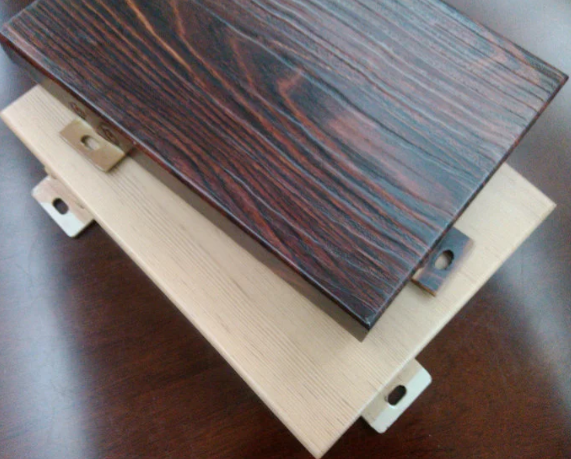heat transfer printing
The heat transfer process of wallboard is a process of transferring decorative patterns to the surface of wallboard by one-time heating of heat transfer film. This process first involves electroengraving according to the set pattern, and then forming a surface print layer on the front of the substrate, while coating the reverse side of the substrate to form a transparent release layer. Next, the ink printing layer is obtained by printing on the surface of the release layer, and two white ink layers are printed on it, of which the second white ink layer is mixed with hot melt adhesive.
This thermal transfer film is then transferred to the wall panel surface by a thermal transfer process, where a second white ink layer is coated with glue and then compounded to the wall panel. This process has several notable features:
1. Pattern diversity: Through electroengraving, a variety of complex pattern designs can be realized, making the decorative effect of the wall panel more diversified.
2. High definition: thermal transfer technology can ensure that the pattern on the wall panel transfer effect is clear and realistic, improve the overall decorative effect of the wall panel.
3. Durability: The color of the pattern transferred by the thermal transfer process is durable, and it is not easy to fade, which increases the service life of the wall panel.
4. Simple process and high efficiency: The entire thermal transfer process is relatively simple, which can greatly improve production efficiency and reduce production costs.
In addition, the application of thermal transfer process in wall panel manufacturing also needs to pay attention to some technical details, such as the control of temperature, pressure and speed, to ensure the ideal transfer effect. The temperature is generally controlled between 140 ° C and 180 ° C, the pressure is generally 4-6kg /cm2, and the speed is determined according to the hot stamping area and heating temperature power. At the same time, when storing and using thermal transfer film, it is also necessary to pay attention to moisture-proof, pressure-proof and ventilation and drying conditions to avoid affecting the transfer effect.
墙板的热转印工艺是一种通过热转印膜一次性加热,将装饰图案转印到墙板表面的过程。这种工艺首先涉及到根据设定图案进行电雕制版,然后在基材正面形成表印层,同时在基材反面涂覆离型剂以形成透明的离型层。接下来,在离型层表面通过印刷获得油墨印刷层,并在其上印刷两层白色油墨层,其中第二层白色油墨层中混合有热熔胶。
这种热转印膜随后通过热转印工艺转印至墙板表面,其中在第二白墨层涂覆胶水后复合至墙板。这种工艺具有几个显著特点:
1. 图案多样性:通过电雕制版,可以实现各种复杂的图案设计,使得墙板的装饰效果更加多样化。
2.高清晰度:热转印技术能够确保图案在墙板上的转印效果清晰逼真,提升了墙板的整体装饰效果。
3.耐用性:通过热转印工艺转印的图案色泽持久,不易褪色,增加了墙板的使用寿命。
4. 工艺简单、效率高:整个热转印过程相对简单,能够大大提高生产效率,降低生产成本。
此外,热转印工艺在墙板制造中的应用还需要注意一些技术细节,如温度、压力和速度的控制等,以确保获得理想的转印效果。温度一般控制在140℃—180℃之间,压力一般为4—6kg/cm2,速度则根据烫印面积和加热温度功率来确定。同时,在存放和使用热转印膜时,也需要注意防潮、防压和通风干燥等条件,以避免影响转印效果。

